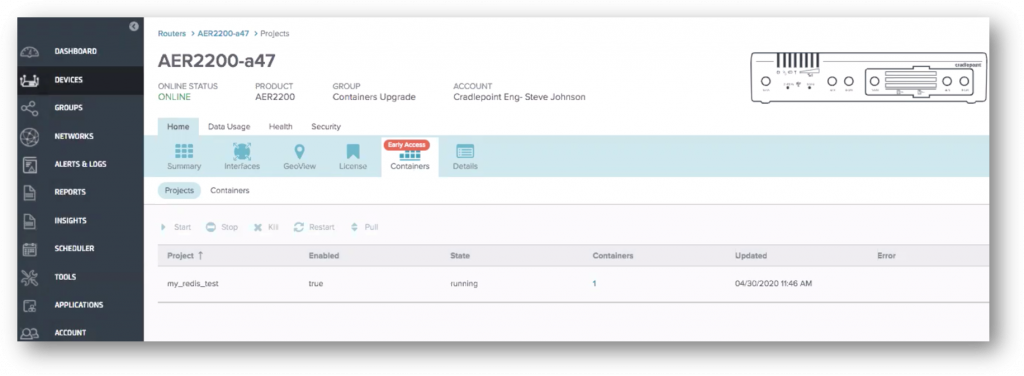Cradlepoint Enables Container Apps to Be Deployed on Wireless Routers
Cradlepoint has added a container service dubbed NetCloud Container Orchestrator (NCCO), to its wireless cellular routers to make it simpler to deploy applications at the network edge.
One of the first independent software vendors (ISVs) to make use of that service is Rigado, which has created an internet of things (IoT) application that can be employed to monitor social distancing in the workplace.
Todd Krautkremer, chief marketing officer for Cradlepoint, says NCCO will make it possible to deploy containerized 4G and 5G applications at the network edge. Rather than relying on wired connections, the Cradlepoint series of routers makes use of LTE to deliver network services to a branch office.
Krautkremer says as the number of latency-sensitive applications that need to be deployed on wireless routers increases, most of those applications will require a level of interactivity that necessitates deploying them as close to the point of consumption as possible, rather than requiring an end user to access them via a cloud service using a wide area network (WAN).
That capability will reduce substantially the amount of LTE bandwidth that is consumed by an edge computing application, he adds.
In addition, Krautkremer notes in the wake of the COVID-19 pandemic, the way many businesses will operate is changing. For example, as mall foot traffic continues to decline, there are likely to be more pop-up retail outlets leveraging LTE networking services to engage customers.
Cradlepoint has been making the case for employing LTE wireless connections as an alternative to wired networks that require IT organizations to deploy traditional wired routers and access points. LTE services also make it feasible to create mobile computing applications involving, for example, fleets of delivery trucks.
Wireless routers from Cradlepoint can now host any Open Container Initiative (OCI)-compatible image capable of running on a 32-bit or 64-bit Arm processors running Linux. IT teams can employ Docker Compose to create containers that are then pulled from a public registry such as Docker Hub. NCCO is an extension of the NetCloud Orchestration Service, through which Cradlepoint centralizes the management of wireless routers. That capability makes it easier to manage deployments of containerized applications across fleets of wireless routers.
 That capability makes it possible to centralize policy management as well as remotely access the command-line interface (CLI) for containers deployed on a Cradlepoint router. IT teams can also monitor containers along with CPU and memory utilization on routers. Any container can be started, stopped, killed or restarted via the NetCloud Manager console.
That capability makes it possible to centralize policy management as well as remotely access the command-line interface (CLI) for containers deployed on a Cradlepoint router. IT teams can also monitor containers along with CPU and memory utilization on routers. Any container can be started, stopped, killed or restarted via the NetCloud Manager console.
Ultimately, it’s conceivable there might one day be more containerized applications deployed on the network edge than there are in the cloud. Naturally, that will create a significant application management challenge as containerized applications become more distributed.
While the Cradlepoint approach certainly applies to existing wireless 4G networks, it will be the widespread availability of 5G networking services that will drive the consumption of containerized applications at the edge. The thing IT organizations would do well to remember now is that if they want to deploy applications on 5G networks starting in 2021, they need to get started building them now.


